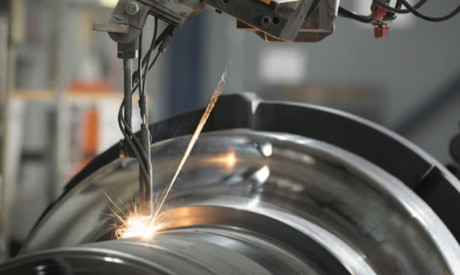Australian surface engineering company ships first laser to China

LaserBond this week announced to the ASX that it has shipped its first customised laser cladding system to China in an AU$1.4 million deal. The Sydney-based firm has its R&D department in Adelaide, which is overseen by company founder Greg Hooper.
The 1.6 x 5.5 m China-bound laser is a ‘junior version’ of LaserBond’s 16 kW laser cell developed in Adelaide. The sale will also attract ongoing royalties and licence fees, and is the company’s first step in expanding its business.
LaserBond Chairman Allan Morton said the 16 kW machine included a number of unique components and would be the most powerful laser of its kind in the world.
“The company in China approached us about two years ago and wanted to license our technology,” he said. “This ‘junior version’ is about one-fourth the power of the Adelaide model. It will be used to make better performing products that last much longer.”
The system design and integration for this export package was carried out within LaserBond’s own in-house facilities. The company has been using thermal coating techniques to produce hard-wearing components and products for the mining, power generation, manufacturing and agriculture industries since 1992.
LaserBond’s technology division was established in response to a number of international enquiries to license its technology. Many of the major components, assemblies and technologies are developed and manufactured for heavy industry and protected with patents (and applications).
Products are typically made from steel and then applied with materials such as nickel alloys, tungsten, titanium carbides and ceramics. Manufactured items include mining picks, furnace doors and ‘down the hole’ hammers.
Executive director Wayne Hooper said cladding large mining industry components was different to other laser applications.
“Our niche is focused at the heavy end — maintaining close operational control of the laser head and work piece, over a long reach with heavy loads and sustained high temperatures called for a rethink in design of the multi-axis work piece manipulator and its associated control system.
“Many surface engineered products for our resources sector customers require extended running times at high power levels. Some of these projects run 16 hours at full power.”
To accommodate these challenges, LaserBond engineers have developed a number of innovations including a powder injection nozzle that is able to better manage intense heat accumulating in the laser head in long runs. The heavy-duty work piece manipulator provides more stable support of heavy, hot, large and complex components and the design of the control software offers more accuracy and provides an easier, more intuitive user interface.
LaserBond predominantly manufactures for the mining industry and exports about 80% of its products to countries including Chile, Mongolia and South Africa.
It is also collaborating with the University of South Australia’s Future Industries Institute to develop 6-axis robots and a position system with capacity up to 20 tonnes for the large laser cell in Adelaide.
The company recently received a $2.6m research grant from the South Australian Government in support of its partnerships with Boart Longyear and the Future Industries Institute.
LaserBond is establishing a new centre of excellence in Adelaide, which will help resource, infrastructure, defence and agricultural industries become more productive. It aims to open the centre early next year.
Australian industry contracts in F-35 program worth over $5 billion
The Department of Defence has announced that Australian industry has reached a milestone of more...
Mitsubishi and Rio Tinto to participate in hydrogen-based ironmaking
Mitsubishi, Rio Tinto, Primetals (UK) and voestalpine (Austria) are collaborating on a...
Greensteel Australia to build next-generation steel mill
Greensteel Australia has announced it has placed an order to purchase equipment for its...








